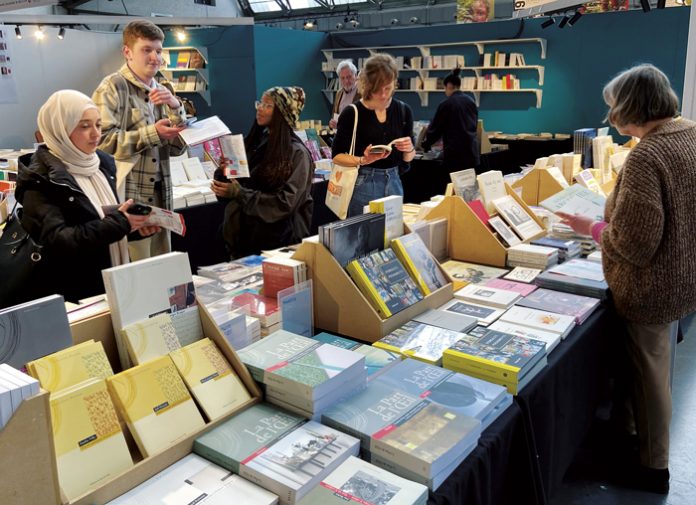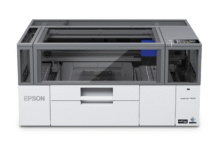
It seems that the upsurge or comeback of commercial print is not restricted to the Indian or Asian market, especially when we talk about book printing. Encounters with publishers at fairs such as Guadalajara in Mexico, Bologna, the London Book Fair, and New York reveal that the number of titles is increasing and so are the queries and orders for the Indian book printing exporters.
There seems to be a reassertion of the printed book as a product in the current new normal and although it is too early to say decisively, the digital content channels seem to be stagnating or stuck in niches. This is making publishers optimistic everywhere in the new normal. The upsurge in titles and printed book demand is compelling them to wrestle with supply disruptions and resource shortages to rebuild reliable, and cost-effective quality suppliers.
Reports on the sales of book printing presses, both offset and digital, and binding and finishing equipment, are also universally positive – validating the upbeat book production narrative. Apart from the 8 and 10-color perfecters, and a significant number of automated binding lines that the Indian book printers have installed in the past year and recent months, they are increasingly acquiring digital presses for proofing and sampling, review copies, and short runs. In some cases, they are actively visiting Chinese exhibitions to acquire the small semi-automatic screen printing, finishing, and binding equipment that viably strengthens their capacities for a variety of high-quality fine finishes and value adds that are a must-have.
The global publishers at the book fairs are quick to share that the Chinese printers have also quite aggressively re-entered the global book print market. They are to some extent lowering their prices to avoid losing the hold they have built up in previous years – especially to those publishers who are seeking alternatives or a second supplier. Ravi Shroff, managing director of Nutech, one of the leading book printing exporters, says, “Publishers are looking at India very seriously and they are keen to align their future plans with Indian suppliers.”

The global publishers are keen to develop Indian suppliers
He adds that they already recognize the Indian printer’s strengths in the paperback market and want to enhance these by sharing their long-term vision and plans with potential suppliers. They are committed to vendor development even if it means some hand-holding over a number of years. Visits and inspections of plants include technical, social, and environmental audits. Customers are investing in the market recognizing that some of the quality, reliability, and environmental goals may take time to achieve. The key idea to grasp here is that they are not just looking at price, which is a given, but at processes that will lead to quality, reliability, and responsiveness – partnerships.
Shroff says, “This is a great time to get into book printing exports. However, you have to first get your equipment right, get your product right, and your act together – which means your skill set. Customers are looking for knowledge, know-how, and responsive communication. They are going to visit your factories so there is no need to put up fancy unrealistic pictures on your website or utter banalities like ‘one of the best or one of the largest.”
He adds that in the beginning, the biggest problem is handling mistakes. Defective products shipped can incur pulping charges and the penalties can include expensive hourly bills. But as the industry has developed over the past couple of decades, with the persistence and learning of several leading printers who are now respected and sought by global customers, the industry and those looking to enter the market should be looking at them as mentors.
Nutech is one of several book printers that have invested in long perfecters over the past two years. A 10-color Heidelberg 102 perfecting press was installed in April, which he says takes just a minute more for make-ready than his 4-color perfecters. Shroff says this enables him to even print 300 copies efficiently although he has bought a Konica Minolta digital press for proofing and sampling.
VK Global has also invested in another Heidelberg 8-color perfecter for its book printing operations at its upcoming modern printing and packaging plant in Faridabad, which is nearing completion. VK Global is a substantial textbook publisher and its managing director Rohit Jain says that the textbook market has rebounded extremely well from the two down years of the pandemic. “Our textbook production is almost double of the previous year – the period from October 2022 to April 2023 has been fantastic,” he says.
The senior educational book editor of another leading Delhi-based private publisher is equally confident. She endorses the robust demand for quality textbooks and sees some of the challenging government-mandated changes in curricula from the perspective of a professional publisher with a long-term perspective of the changing demands of education and culture in the social sciences. In the meantime, her publishing house is more focused on languages, science, and mathematics.















